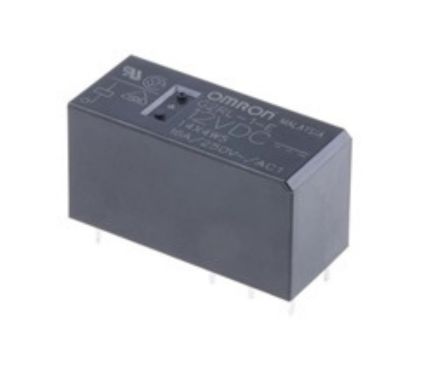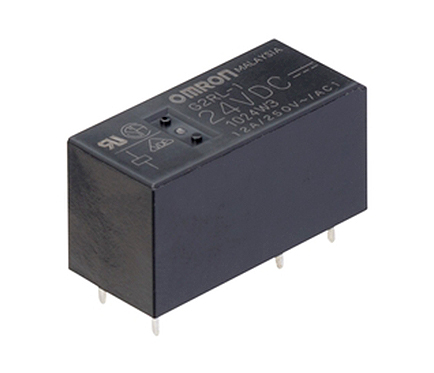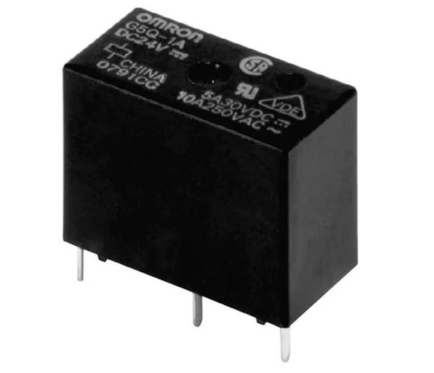PCB relays, also known as printed circuit board relays, are essential components in the world of electronics. These small yet powerful devices play a crucial role in controlling the flow of electrical signals within electronic circuits. By acting as switches, they allow or interrupt the current based on specific conditions, making them indispensable in a wide range of applications.
A PCB relay consists of a coil, an armature, and contacts. When an electric current passes through the coil, it generates a magnetic field that attracts the armature, causing the contacts to open or close. This mechanism enables the relay to control larger currents or voltages with the help of a smaller control signal. Through this blog, we will understand the key features of these relays, how they function, and tips for choosing the perfect PCB relays.
What is a PCB relay?
A PCB relay, also known as a printed circuit board relay, is an electronic device that plays a crucial role in controlling electrical circuits on a printed circuit board (PCB). It serves as an interface between the PCB and external electrical systems, providing the means to switch, control, or isolate the flow of electric current.
The primary purpose of a PCB relay is to enable the efficient and reliable operation of various electronic devices and systems. By utilizing electromechanical or solid-state principles, these relays offer a versatile solution for controlling power circuits, protecting sensitive components, and facilitating signal routing.
What are the key components of a PCB relay?
A typical PCB relay consists of several key components that work together to achieve its functionality. These components include:
The coil is an electromagnetic component of the relay that generates a magnetic field when an electric current passes through it. The coil is responsible for actuating the relay’s switch mechanism. Example: Coil voltage – 12V DC, Coil current – 30 mA.
PCB relays feature one or more sets of contacts, which are metallic conductive elements designed to open or close the electrical circuit. Contacts are classified into two types: normally open (NO) and normally closed (NC). Example: Number of NO contacts – 2, Number of NC contacts – 1.
The switching mechanism is responsible for physically opening and closing the contacts when the coil is energized or de-energized. It ensures the reliable transfer of electrical signals or power between different circuits. Example: Switching speed – 5 milliseconds.
The actuator, often in the form of a movable armature, is mechanically linked to the switching mechanism. When the coil generates a magnetic field, it attracts or repels the actuator, causing the contacts to change their position.
PCB relays are enclosed in a protective housing that shields the internal components from external factors such as dust, moisture, and mechanical stress. The housing also provides electrical insulation to ensure safety and prevent short circuits. Example: Housing material – Flame-retardant plastic, Ingress Protection (IP) rating – IP65.
What are the advantages of PCB relays?
PCB relays are a reliable, space-efficient, versatile, and user-friendly solution for electronic systems and they offer numerous advantages for electronic systems. Here are some of those:
- They provide exceptional reliability and durability, ensuring stable performance even under demanding conditions.
- Their compact size and space-saving design make them ideal for applications where space is limited.
- PCB relays are highly versatile and compatible with a wide range of applications, offering flexibility in system design.
- These relays are known for their ease of installation and maintenance, simplifying the process for technicians and reducing downtime.
What are the key features of PCB relays?
- Contact ratings and switching capabilities
PCB relays boast various contact ratings and switching capabilities to accommodate diverse electrical loads.
- Coil voltage and power requirements
PCB relays are designed with specific coil voltage and power requirements, determining the energy needed to activate the relay.
- Signal sensitivity and response time
PCB relays exhibit varying signal sensitivity levels, indicating their ability to respond to input signals accurately.
- Electrical and mechanical lifespan
PCB relays offer extended electrical and mechanical lifespans, ensuring long-term reliability and durability.
Factors to consider when choosing PCB relays
When selecting PCB relays, considering these factors empowers you to make an informed decision while choosing PCB relays for your specific needs.
- Assessing load requirements and ensuring compatibility with the application’s voltage and current specifications is essential to ensure reliable performance.
- Considering environmental factors such as temperature, humidity, and vibration levels helps determine the relay’s suitability for the operating conditions.
- Evaluating signal integrity and noise immunity ensures optimal functioning in the presence of electrical interference.
- Weighing cost-effectiveness and availability enables making a practical choice that meets both budget constraints and procurement timelines.
Conclusion
PCB relays find wide-ranging applications in modern electronic systems across various industries. Their versatility makes them indispensable in industrial automation, automotive electronics, consumer appliances, and telecommunications. These relays play a crucial role in ensuring reliable switching and control functions, offering enhanced performance and safety. As key components of electronic circuits, selecting the best PCB relay options is vital to optimize system efficiency and longevity. Whether it is for load control, signal integrity, or cost-effectiveness, it is crucial to carefully evaluate and choose the most suitable PCB relay options available in the market to meet specific application requirements and achieve optimal results.




